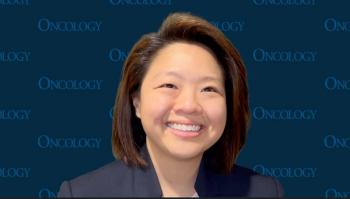
- ONCOLOGY Vol 13 No 3
- Volume 13
- Issue 3
Commentary on Abstracts #2984 and #2983
High-dose chemotherapy with autologous stem-cell support has clearly demonstrated efficacy in patients with relapsed or refractory Hodgkin’s disease (Horning et al: Blood 89:801-813, 1997) and is probably superior to salvage chemotherapy in this setting (Yuen et al: Blood 89:814-822, 1997). Disease burden and chemosensitivity have been shown to be predictive of long-term outcome following the transplant. However, a clear advantage may be difficult to demonstrate because of late complications, including secondary malignancies, particularly acute myelogenous leukemia (AML) and myelodysplastic syndrome (MDS) (Roberts et al, abstract #2984).
High-dose chemotherapy with autologous stem-cell support has clearly demonstrated efficacy in patients with relapsed or refractory Hodgkin’s disease (Horning et al: Blood 89:801-813, 1997) and is probably superior to salvage chemotherapy in this setting (Yuen et al: Blood 89:814-822, 1997). Disease burden and chemosensitivity have been shown to be predictive of long-term outcome following the transplant. However, a clear advantage may be difficult to demonstrate because of late complications, including secondary malignancies, particularly acute myelogenous leukemia (AML) and myelodysplastic syndrome (MDS) (Roberts et al, abstract #2984).
The retrospective analysis presented by the City of Hope investigators (Nademanee et al, abstract #2983) suggested that the outcome of transplantation is best when performed during first remission. However, such an analysis is subject to selection bias and requires confirmation by prospective trials.
Articles in this issue
almost 27 years ago
WHO Declares Lymphatic Mapping to Be the Standard of Care for Melanomaalmost 27 years ago
Navelbine Increased Elderly Lung Cancer Patients’ Survivalalmost 27 years ago
Consensus Statement on Prevention and Early Diagnosis of Lung CancerNewsletter
Stay up to date on recent advances in the multidisciplinary approach to cancer.


















































































